|
|
 |
The Three Cultures |
|
The journey to Mexico was an individual trip planned from
France. The idea was to look further into the three cultures,
first Precolombian then Hispanic with the great cities in the
north of Mexico City and also modern everyday life.
The tour was made in August 1984.
The report is in six tables. The general comments
are given by the
Mexico presentation. |
|
|
|
|
Mexico City |
|
|
|
 |
|
Mexico city |
 |
|
Museo National |
 |
|
Teotihuacan |
 |
|
Tula |
|
|
Approach: The Iberia flight caused us some worries. On the
takeoff at the Madrid stopover, a tyre was damaged, requiring a
detour to Miami to be repaired before landing at Mexico City. The tour
organized from France was made by a rented car which we took the
day after our arrival. It was a Datsun new car without number plate.
Only a small poster fixed on the rear window indicated that it was a rented car.
This characteristic caused difficulties at the end of the stay:
The date mentioned was exceeded and caused some trouble with the police.
Mexico City: The city was
the third most populated in the world after Tokyo and New York. The best
and the worst can be found : music -Mariachis- and noise, pollution
and planted parks, colonial palaces and shantytowns. The visit of
this splendid city took several days. The administrative and
worship buildings date back to the colonial time and are
splendid. Our trips in Latin America showed the architectural
Hispanic unit: In all cities, the Zocalo is the square of the
administrative and commercial centre.
The Museo Nacional de Antropología
is universally famous. It was inaugurated by André Malraux. We
visited it at the beginning and the end of the stay. Some artefacts
came to France at the time of the Mexican art exhibition.
Xochimilco: The visit of
the channels is a must.
San Angel: This village
has become a suburb of Mexico City, it is a synthesis of colonial houses,
aristocratic residences and parks.
Tenochtitlan: The Aztec
former capital was destroyed by Cortès in 1520.
Tepotzotlan: A suburb of
Mexico City, it has the charm of old colonial cities.
Teotihuacán: The site dates
back to before our era, it was a place of pilgrimage. From the
Pyramid of the Moon in the north, the buildings are along the
processional way: Calle of los Muertos. Behind the Citadel,
the temple of Quetzalcóatl has kept remarkable sculptures in the round.
Tula: The site was visited
at the end of the stay on the way back from Querétaro to Mexico City.
The Toltec former capital still presents gigantic Atlantes. |
|
|
|
|
|
Mexico City is a metropolis of 22 million inhabitants. In spite of
its pollution, crazy automobile traffic, the city is pleasant,
with exceptional places to visit and pleasant evenings with
the spectacle of Mariachis.
During the classical period from 300 to 900 BC, Teotihuacán was
the dominating and civilizing power in Mesoamerica. Its architectural
and religious influence dominated all the people of the area
until the year 1000.
|
|
|
|
|
The Aztecs |
|
|
|
|
Approach: We left Mexico City southwards and towards the
east coast to visit some Aztec sites.
Cholula: The site was
occupied back to the old times before our era under the Olmec
influence. The top of a hill is occupied by the Santuario of los
Remedios, actually the hill is an old pyramid 17 ha large, the vastest
in the world.
Puebla: 2,162 m high,
the city is surrounded by mountains in a very fertile valley.
It is famous as the most colourful colonial city: The cupolas of
the churches are covered with polychrome enamelled earthenware.
Jalapa: The only interest
of this city lies in the museum of the State de Veracruz, the most
attractive after the anthropological museum of Mexico City. Centred
on the Olmec civilization, it exhibits colossal heads as well as the
practice of the deformation of children's skulls. One of the
most captivating artefacts is the statue of God Jaguar.
Zempoala: Totonac archeological
site in a luxuriant plain. Zempoala was the first city met by Cortès then ransacked.
Vera Cruz: The only port on the Gulf
of Mexico, its charm is due to the quite Mediterranean bustle of the Zocalo.
The site of the battle of Camerone is close to Tejeda Villa 71 km away
from Vera Cruz.
|
|
|
|
|
|
|
|
The Aztecs were nomads before they settled on the shore of lake Texcoco,
in an inhospitable place, in 1345 and founded their capital Tenochtitlan.
The tribe emerged from barbarian in 1345 and sank in 1521 under the blows
of the conquistadores. The empire lasted only two hundred years, but it
occupied the area of central Mexico between the two oceans.
As in other civilizations, the myth of the birth of the Gods and the
history of the people are mixed. Its originality lies in the merging of
myth and history, the identification of the Aztec tribe to Huitzilopochtli
the god who conquered the darkness.
|
|
|
|
|
The Olmecs |
|
|
|
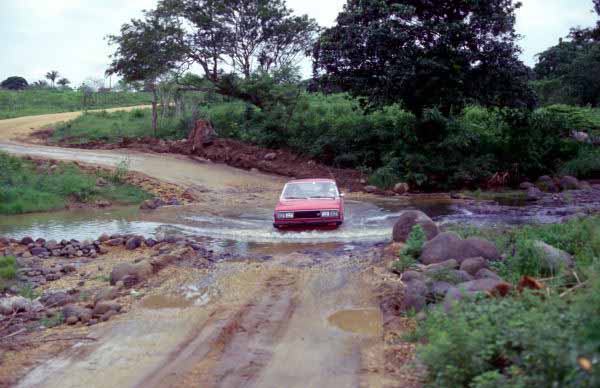 |
|
Santiago de Tuxtla |
 |
|
La Venta |
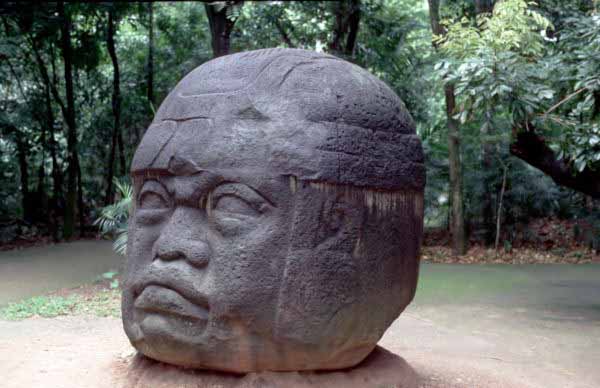 |
|
La Venta |
|
|
Approach: On
the way to Villahermosa, we crossed a ford in Santiago de
Tuxtla which caused us some troubles.
Santiago de Tuxtla: The museum is note worthy.
It is a good introduction to the Olmec civilization.
La Venta: The archaeological park, at
the entrance of Villahermosa, is a didactic park with colossal heads,
sacrificial altars and sculptures of Jaguars among the trees.
The museum of Tabasco exhibits mainly Olmec and Maya artefacts
from the neighbouring archaeological sites, Yaxchilan and
Bonampak, accessible by small aircraft.
Ciudad de Carmen: Fishing port opposite
the island of Carmen, the continuation on the road required the use
of a pontoon to cross over Rio Usumacinta whose banks are invaded
by watery plants. The upstream river banks are occupied
by many archaeological sites whose visit is possible only in
expeditions in the tropical forest. |
|
|
|
|
|
The Olmecs belong to the formative ages of Mexico before our era. Their
influence was preponderant for the development of the area. The name
Olmec imperfectly refers to a civilization called "Tenocelome",
-those who have a Jaguar's mouth- by Jimèrez.
The cultural contributions lie in the use of hard stones -jade- characteristic
of the Olmec sculptures. The "baby faces", chubby figurines, influenced
all later civilizations. They may have been precursors in the invention of
writing and the calendar.
|
|
|
|
|
The Maya |
|
|
|
|
Approach: Starting from
Campeche, we entered the Maya area.
Campeche: The city on the seashore has the style
of colonial cities. Its archaeological museum is worth the detour.
Edzna: The site dating back to 672 BC
has two interesting buildings: the ceremonial centre and the
main pyramid.
Sayil: The site is located in a thick maquis
accessible by car. The main building has three stories with sculptures
of God "Chac". The temple El Mirador can be reached by a path.
Xlapak: The site is in ruins. Yet, it presents a building
with a beautiful frieze. Broken, it shows the methods of Maya construction.
Labna: It is characterized by the monument called the
"Labna Arch" with complex geometrical decorations. The other
buildings are El Palacio and El Mirador decorated with an openwork peak.
Kabah: The "Codz Poop" building is
representative of the Puuc architecture with projecting sculptures with
geometrical adornments.
Uxmal: It was a Maya capital. The monuments
are among the purest of the Puuc style with geometrical embellishments
and stylized masks. The most interesting buildings in this vast archaeological
park are the Pyramid of the Magician, the Nunnery Complex, the Governor's Palace
and the Ball Court.
Mérida: The city was founded in 1542. The
archaeological museum shows some Maya beautiful artefacts:
funerary statuettes, jade collars.
Izamal: A charming provincial city, it has a
vast Franciscan monastery (1553-1561) surrounded by arcade galleries.
Chichen Itza: The large archaeological park
shows some old monuments of two periods: before and after the Toltec invasion.
The former is characterized by Puuc architecture, the latter by serpentine
columns and the "Chacmool".
The most representative buildings are: The Pyramid of Kukulkan, the Ball Court,
the temple of the Tigers and the Warriors. The "Caracol"
was certainly an astronomical observatory.
Cancun: The city is a seaside resort in an
exceptional site. We took one day of pleasant rest.
Tulum: The site on the seashore is surrounded by
a strong wall on three sides and an abrupt cliff. The temple of the Frescoes
is the most remarkable of this complex.
Coba: The old Maya city dates back to 623 BC
as a stele attested it.
Kohunlich: The site, in a splendid natural
reserve, has an attractive monument, the Pyramid of the Masks.
Xpuhil: The monuments overgrown with
vegetation are amazing for their proportions and their verticalities
showing the influence of Tikal in Guatemala.
Becan: The site hidden in the vegetation
looks like Xpuhil.
Palenque: The monuments are
built on small hills leaning against a mountain in full tropical
vegetation. The site is vast with many buildings. The most remarkable
are: The temple of the Inscriptions, El Palacio with its sarcophagus dug
in a monolithic tank.
|
|
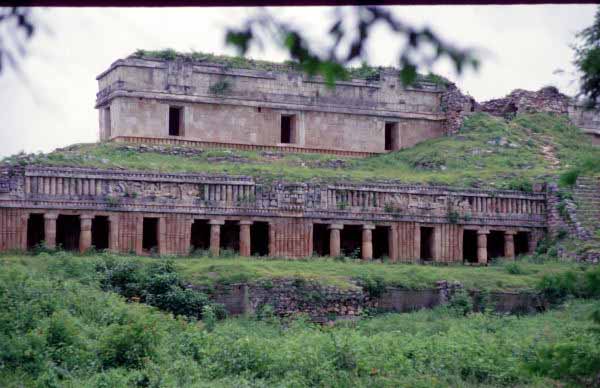 |
|
Sayil |
 |
|
Labna |
 |
|
Kabah |
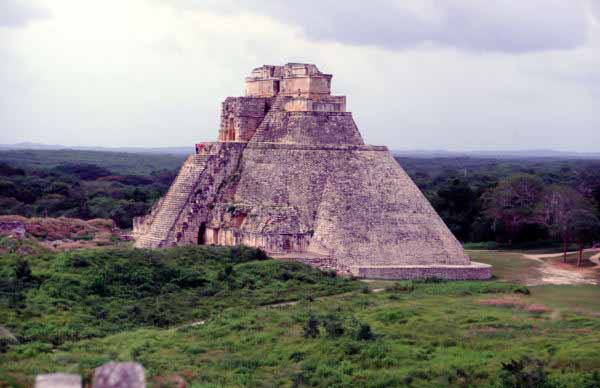 |
|
Uxmal |
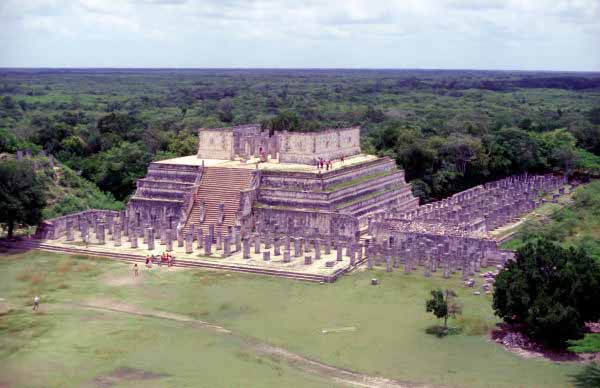 |
|
Chichen Itza |
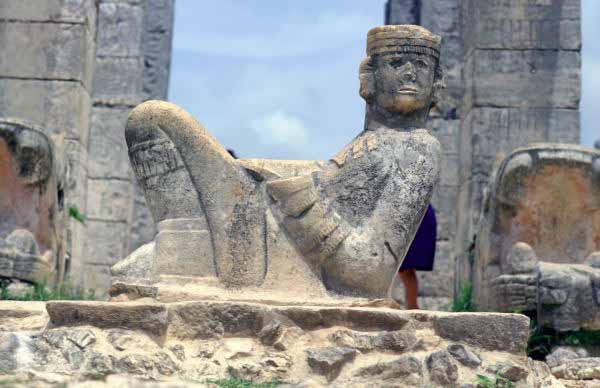 |
|
Chacmool |
 |
|
Palenque |
|
|
|
|
|
|
The Maya developed the most original culture if not the most advanced in
Mesoamerica even in all Americas. They belong to the classical period
from 300 to 900BC under the administrative and cultural rules of Teotihuacán.
Unlike the other people of the area, they lived in State Cities which were not
capitals but religious centres showing an architectural unity.
The major contributions of the Maya lie in mathematics, the knowledge of the zero,
and in the "computing" of time with a precision
only exceeded in the 20th century by "atomic clocks".
|
|
|
|
|
The Zapotecs, Mixtecs |
|
|
|
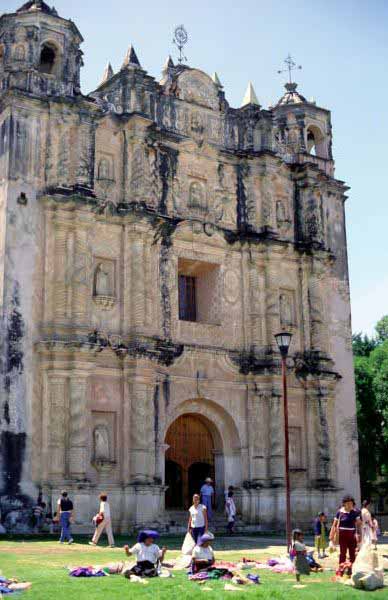 |
|
San Cristobal |
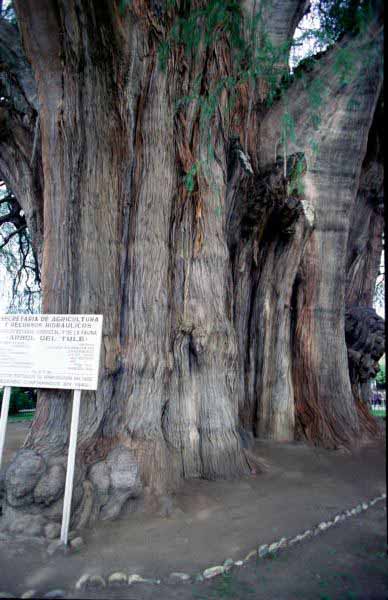 |
|
Santa Maria de Tule |
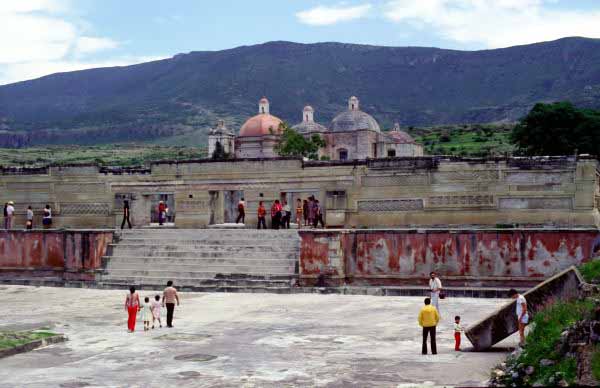 |
|
Mitla |
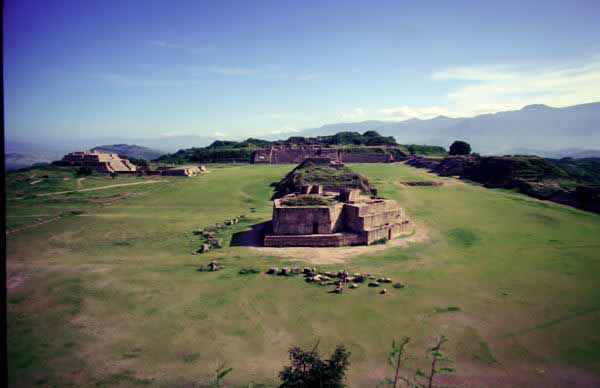 |
|
Monte Alban |
|
|
Approach: The
trip from Palenque to San Cristobal was on a dirt road 207 km long
which was rather difficult in that season. The charming village of
Acosingo is close to the "Montebello Lagoons". This area was in
a turmoil at the time of Chiapas' revolts from 1994 to 1997.
San Cristobal de Las Casas: Founded in 1528
2,113 m high, the city has kept its charm of provincial colonial city.
Some beautiful aristocratic residences could be visited. The cathedral,
the church Santo Doningo and the market offered moments of raptures.
The village of Zinacantán was the occasion to see a church where Catholicism
and Indian animism are merged. It was kept by armed men.
Already at that time, we were not welcome.
Tehuantepec: The city on the seashore of the
Pacific Ocean was a stage as we arrived from San Cristobal after
seven-hour drive.
It is especially known by sailors in the whole world.
Santa Maria de Tule: A giant cypress
close to the church is of a very rare species.
Tlacochahuaya: The church of the 16th
century is preceded by an atrium.
Mitla: The archaeological park has monuments
attributed to the Mixtec civilization. The group of monuments known as of that the
Columns is the best preserved.
Dainzu: This small archaeological site dates
back to the Monte Alban period.
Lambityeco: the small pyramidal sanctuary
is dated back to the Monte Alban period.
Tlacolula: This Zapotec city has a market
on Saturdays, the day of our passage, very colourful.
Yagul: The archaeological park consists
of monuments of the Monte Alban period.
Oaxaca: At the time of our visit of this
provincial city with old fashioned charm, we had in memory the tribulations
of the "Consul" and his wife Yvonne of the novel "Under the volcano"
by Malcolm Lowry. The city is still a large Zapotec artisanal centre.
The museums of the Oaxaca State and prehistoric art of Rufino Tamayo
exhibit Zapotec artefacts.
Monte Alban: At the top of an eroded hill,
2,000 m high, the site consists of monuments of great sobriety which
convey serenity. |
|
|
The Zapotecs came under the Olmec influence at the formative period then under
Teotihuacán at the classical time. Their originality consisted in burying their
dead which explains the presence of tombs at Monte Alban.
The Mixtecs succeeded the Zapotecs, but they used Monte Alban only as a ceremonial centre.
They have left splendid manuscripts and gold artefacts of great quality.
|
|
|
|
|
|
|
|
Colonial cities |
|
|
|
|
Approach:
Leaving Oaxaca, we took the road northwards to visit the Hispanic
colonial cities.
Cuernavaca: The Precolombian city was
called Cuauhnáhuac, it is located in an environment of
forests, orchards and bougainvilleas. It is dominated by the imposing
volcano Popocatépetl. When we visited the city, there too, we had reminiscences
of the "Consul" and we looked for the "Bellavista"
Xachicalco: The site was occupied during the
classical period. It is important because it is located at the crossroads of
several civilizations.
Taxco: Colonial city, it was an important
centre of silver mines in the 18th century. The Santa Prisca church
has a baroque facade with more exuberant ornament.
Malinalco: The ceremonial centre of the
site is built in terraces with ditches to drain rainwater. The
main temple is surmounted with the eagle of God Sun.
Patzuaro: A quiet town on the edge of the
eponymous lake 2,175 m high, it is famous for its landscapes
and its delicious "pescado blanco".
Morelia: It was founded under the name of
Valladolid. It is famous for its orchids and the pink colour of the
main buildings.
Guadalajara: The second city of Mexico has
an exceptional monumental complex, in particular the four squares
surrounding the cathedral. The museum of Jalisco State has several
archaeological sections as well as an art gallery where one can see
murals. We attended cockfights in a place where we were led by police
officers who caught me for speeding!
Guanajuato: Former mining city, it owes its
fame to silver mines. Its originality lies in its localization
in a narrow valley causing a town planning as tortuous as the
streets are sinuous with an underground avenue!
Dolores de Hidalgo: It was a stopover to visit the
parish church.
San Miguel Allende: The city has become the
vacation resort of American and Mexican artists. The craft
industry is one of the riches of this "historical heritage" classified city.
Queretaro: The history of the city is exciting.
It was the cradle of the independence of Mexico starting from a literary
club in 1808. The square of Independence is representative of colonial art
and the policy of historical heritage preservation. |
|
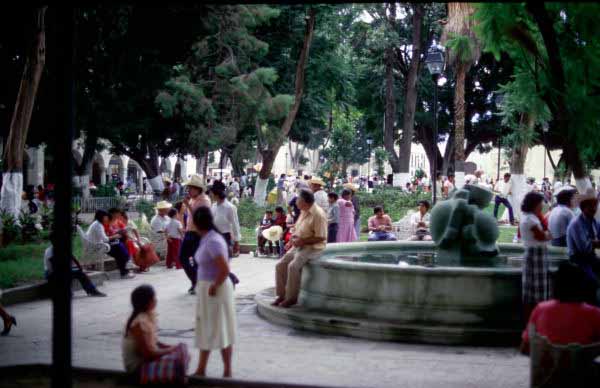 |
|
Cuernavaca |
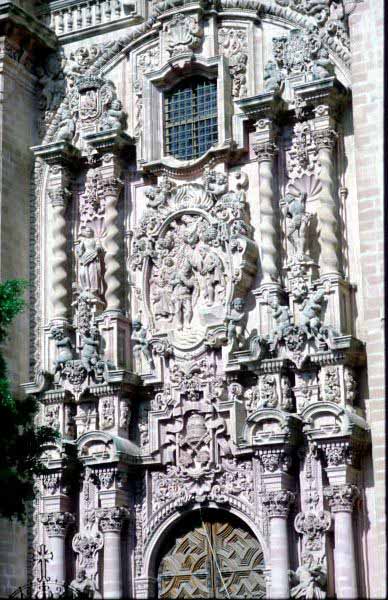 |
|
Taxco |
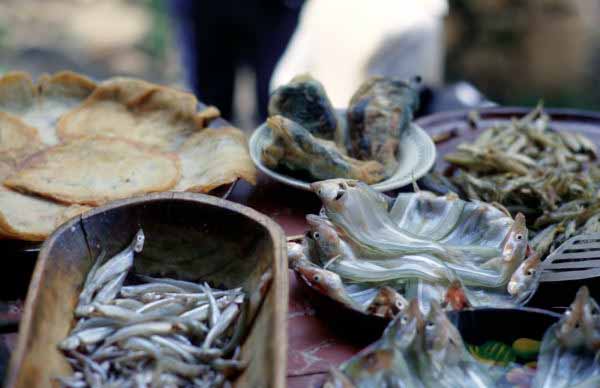 |
|
Patzuaro |
 |
|
Morelia |
 |
|
Guanajuato |
|
|
|
|
|
|
Visiting Mexico was the discovery of a people very hospitable quite willing to
communicate with foreigners. The overview of the three
cultures allowed to approach the cultural complexity of modern Mexico:
It is necessary to put in prospect the three cultures, the ethnic and demographic
developments without forgetting the eventful history of Independence.
The synthesis gives Mexicans an extraordinary originality.
We had some experiences sometimes comic sometimes irritating such
as the confiscation of my passport and my international driving licence
by a police officer in Guadalajara intrigued by the lack of the number plate:
Obviously he wanted "la mordida". At that time, police officers were
equipped with adjustable open-end wrenches to dismount number plates:
They had to be recovered at the police station by paying a fine.
|
|
|
|
|
The return to France was quieter than the outward journey
|
|
|
|
| Neuilly, le 2004/02/29 |
|
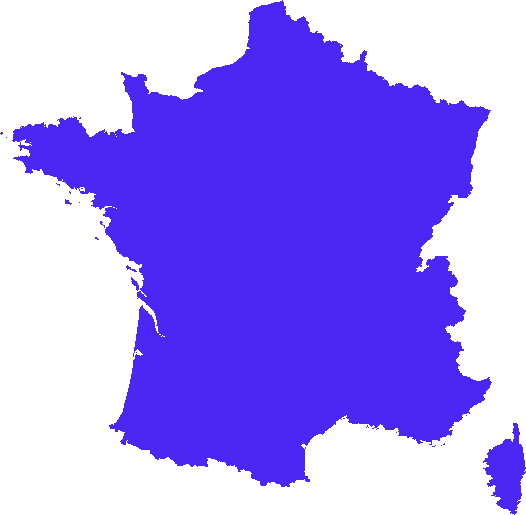
|
|
|
|
|